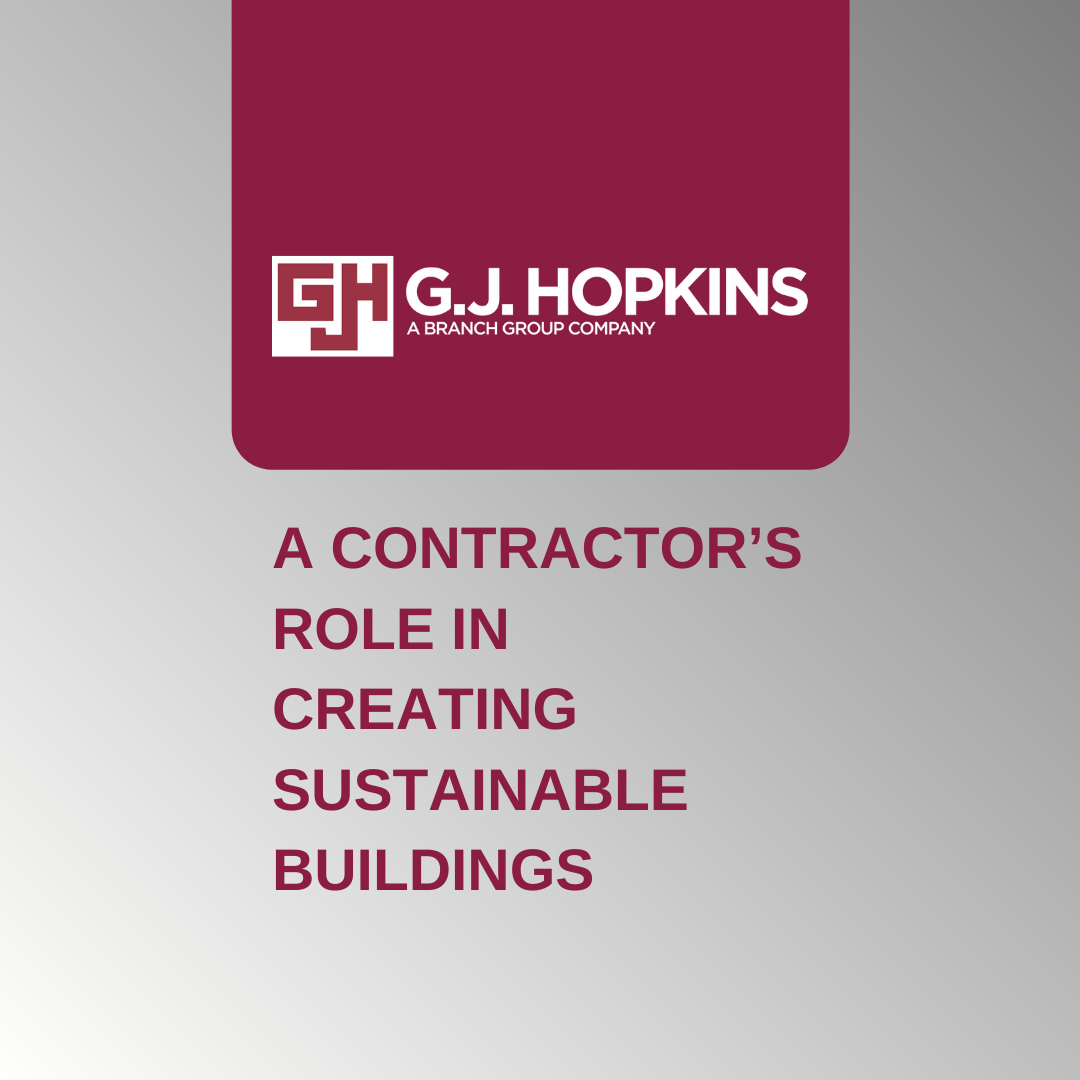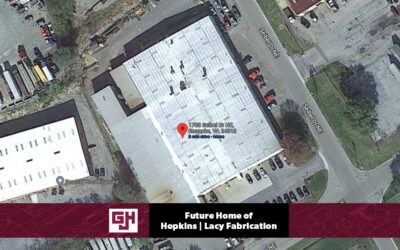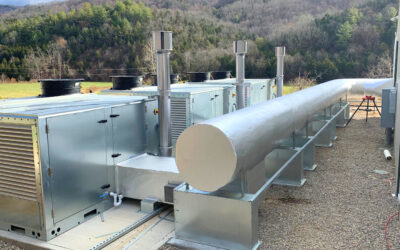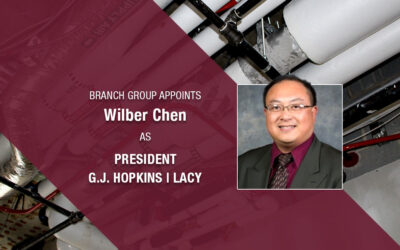>When the U.S. Green Building Council (USGBC) launched LEED (Leadership in Energy and Environmental Design) to the public in March 2000, G.J. Hopkins didn’t know what to expect. The green building rating system had its own strict set of rules that had to be learned and required a new level of project documentation. Now, G.J. Hopkins has LEED on their list of expertise and consistently helps clients reach their goal LEED rating level.
One of those clients is Virginia Tech Carilion (VTC). G.J. Hopkins won the MEP (mechanical, electrical, and plumbing) contract for their Fralin Biomedical Research Expansion (BRE) Project in Roanoke, Virginia. The new 140,000-square-foot building will provide additional state-of-the-art research laboratories for students at the health sciences and technology campus.

VTC is working with architectural and engineering firm AECOM on the building and hopes to achieve LEED v4 BD+C Silver certification, requiring 50-59 points. The scoresheet has more than 50 items on the checklist and covers everything from location and transportation to energy and atmosphere.
Some of those points will come from the rainwater system. G.J. Hopkins installed the piping for the large concrete tank that doubles as a terrace on the ground floor. It collects rainwater, pumps it into a filtration system, and it becomes greywater that’s used for flushing the toilets and urinals.
Other LEED components include electrical and plumbing fixtures, fittings, and the type of drywall and wood used. G.J Hopkins knows at the start of a project what materials are required, and in addition to installation, the project team is responsible for tracking and documentation.
“The engineer picks out the fixtures that will give him the most points,” Project Manager David Mays said. “So, what we have to do is give preliminary quantities for the kind of LEED products we’re using, provide the specs on those materials, and keep track of where the materials come from because they can’t be manufactured in certain countries.”
Materials extracted, harvested, recovered, or manufactured within 100 miles of the job site contribute more to the value of the project. If only a fraction of a product or material is produced within 100 miles, only that percentage (by weight) contributes to the value.
When it comes to finding materials that meet the LEED requirements, David said it’s not much of a challenge because many vendors and manufacturers have started focusing on energy efficiency. They also have to provide G.J. Hopkins with specific documentation for LEED components. For example, flooring, ceilings, walls, and thermal insulation all require laboratory test reports showing compliance with requirements for low-emitting volatile organic compounds (VOC) materials, such as formaldehyde.
To ensure G.J. Hopkins, and other contractors, meet the material requirements and install materials correctly, LEED requires commissioning, which is the final step of a project. VTC hopes to earn extra points by using the enhanced commissioning process on the Fralin BRE Project. A commissioning agent will work with G.J. Hopkins’ startup technician to verify that all HVAC, plumbing, and electrical systems are installed according to the engineer’s design and functioning as intended. Commissioning also applies to all other energy-related systems.
Even after G.J. Hopkins finishes their portion of a LEED project, the overall enhanced commissioning process will continue for months and requires building monitoring. In the end, there’s always a chance that a project doesn’t earn the necessary points to reach the desired level of LEED certification, and sometimes companies follow the LEED process but will not pay the fee for the official LEED certification.
Whether a project becomes certified or not, the process is still the same for G.J. Hopkins. Looking at their last 15-20 projects, David said about 95 percent of them were incorporating LEED requirements, and he sees the value of the green building rating system.
“It’s a good thing what they’re trying to do. When you take a sink that used to run two gallons a minute and it’s now down to a half a gallon a minute, that’s great,” David said. “There are also some health benefits. VOCs in a new building are high, so the flush out lowers the VOC in the air and creates a healthier work environment. So, there are definitely some advantages to LEED.”






